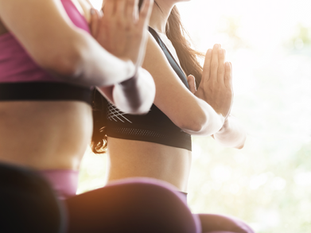
Understanding the Pelvic Floor: A Simple Guide for New Pilates Instructors
Jun 21
2 min read
1
13
0
As a new Pilates instructor, developing a foundational understanding of the pelvic floor is key—not just for your anatomical knowledge, but for teaching clients how to move with greater control and awareness.
What is the Pelvic Floor?
The pelvic floor is a group of muscles and connective tissues that span the bottom of the pelvis, like a hammock. These muscles support the pelvic organs (bladder, uterus, and bowel), help control continence, and contribute to core stability and breath function.
Key muscles include:
Levator ani group (pubococcygeus, puborectalis, iliococcygeus)
Coccygeus muscle
Together, they work with the diaphragm, abdominal muscles, and deep back muscles to create a functional unit known as the deep core or inner unit.

Why Pelvic Floor Matters in Pilates
A responsive, coordinated pelvic floor supports spinal alignment, posture, and breath. Teaching students to engage these muscles safely can help with:
Lower back support
Postnatal recovery
Balance and stability
Awareness of breath and intra-abdominal pressure
Cueing the Pelvic Floor
Cueing the pelvic floor can be subtle, and should always be approached with care and inclusivity. Here are a few beginner-friendly cues:
“Imagine gently drawing the sit bones toward each other.”
“Think about lifting the muscles at the base of the pelvis, like an elevator going up one floor.”
“Engage the muscles you'd use to stop the flow of urine—but gently, not forcefully.”
Avoid over-cueing or bracing. The goal is a light, coordinated engagement—not a hard contraction.
Teaching Tips
Encourage students to breathe first before engaging the pelvic floor.
Remind them the engagement should feel like a subtle lift, not a squeeze.
Avoid overly gendered language; keep your cues accessible and inclusive.
Remember — your pelvic floor isn’t trying to win an arm-wrestling match. It’s all about subtle strength, not superhero squeezing. In Pilates, we want lift and support, not tension and gripping.






